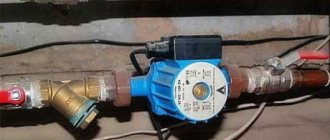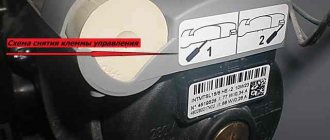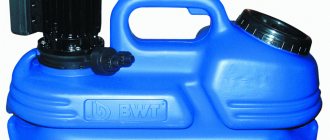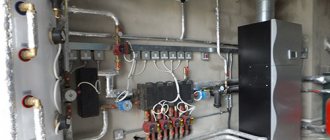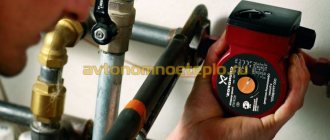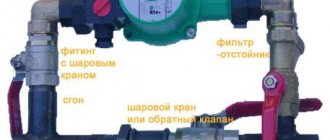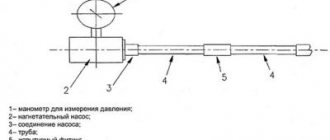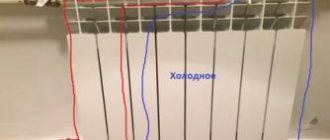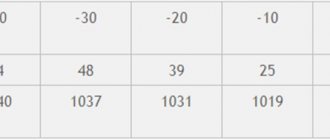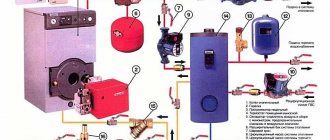Uniform distribution of the coolant inside the pipeline and radiators is ensured by using a pump for the heating boiler. The device maintains the required pressure in the system, helping the fluid overcome a difficult path. You can install the circulation pump yourself if you read the instructions and technical design of the device.
What is a circulation pump
One of the necessary elements in the hot water supply and heating system is the circulation pump. This device performs pumping and suction functions and promotes the active movement of liquid inside the heating system. The pump is mounted directly into the pipeline. Designed to operate in a closed loop.
The main elements of the device are:
- frame;
- impeller;
- rotor;
- motor shaft;
- terminal box;
- engine;
- air propeller.
As soon as electrical energy is supplied to the rotor, it begins to rotate, transmitting a signal to the impeller to move. This causes fluid to be sucked in from one side of the device and expelled from the other. To make the units easier to install and maintain, manufacturers produce different models in body shape and dimensions.
Prices for circulation pumps for heating boilers
circulation pumps for heating boilers
What is it used for?
Thanks to the circulation pump, the heating of the premises is carried out evenly and quickly, so the scope of application of such units is extensive.
Pumps are installed for the following purposes:
- Improving the quality of operation of a natural circulation system.
- Forced movement of coolant during geothermal heating. The heat pump operates according to the classic Carnot cycle: it takes in cold coolant deep below and in return receives a fluid flow heated to 50 degrees inside the heating system. In the summer, geothermal equipment transforms from a heater into a passive air conditioning device.
- Ensuring water circulation in hot and cold water supply systems in a private home.
- Increasing the efficiency of a warm water floor design.
- Use in air conditioning systems for cooling purposes.
Types of pumps
All electric pumps have a common operating principle, but differ in design and efficiency. To choose the right device, you need to know what types of equipment exist and how they differ.
There are two types of circulation units:
- With wet rotor. Such devices have a modular design, which simplifies their maintenance and repair. The rotor and impeller are in the working environment, only the electrical part remains dry. The devices have a low noise level. A step speed controller allows you to control the consumption of electrical energy. The advantage of the unit is its long service life if installed correctly. The disadvantage of the device is its sensitivity to the quality of the working fluid.
- With dry rotor. The pump differs in the type of design. The rotor is enclosed in a sealed housing, and the impeller is immersed in the coolant. The engine is protected from liquid penetration by sealing rings. The main advantage of the unit is its high efficiency and minimum requirements for the quality of the coolant. The device produces a high noise level.
Judging by the characteristics, we can conclude that devices with a wet rotor are more suitable for private houses and apartments.
Advantages of boilers with a pump
An electric boiler with a circulation pump, thanks to its unique design, can perform the functions of a whole complex of heating devices.
The increased demand for such equipment is due to its advantages:
- A large range of models makes it possible to choose a boiler for heating rooms of any size. The user does not need to select a pump separately.
- The device allows you to drive liquid through all circuits at optimal speed. This helps to heat the room evenly and quickly.
- The efficiency is 90% and above, which indicates the high efficiency of the models.
- Automation of the process ensures simple setup and high safety of boilers.
- The equipment is environmentally friendly, since no harmful substances are emitted during its operation.
- Simple installation of the heating system.
Manufacturers produce wall-mounted boilers that are suitable for small apartments, as well as floor-standing boilers that can provide heat to a large area.
Flaws
Boilers with built-in circulation pumps are not without drawbacks, familiarity with which will allow you to decide whether it is worth installing such equipment.
Main disadvantages:
- Electricity is more expensive than gas or solid fuel.
- The uninterrupted operation of the boiler directly depends on the voltage in the supply network.
- The need to install high-quality wiring in a heated room.
The disadvantages of using boilers are mainly related to the need to provide them with electrical energy. Before installation, it is necessary to calculate the current strength in order to select a cable of the required cross-section and a machine. To reduce the power of the boiler itself, a battery tank is installed on the output circuit of the heating system.
Types of circulation pumps
To understand how this device works, you need to know the differences between the two types of circulation pumping equipment. Although the fundamental design of a heating system based on a heat pump does not change, the two types of such units differ in their operating features:
- A pump with a “wet” rotor is made of stainless steel, cast iron, bronze or aluminum. Inside there is a ceramic or steel motor. The technopolymer impeller is mounted on the rotor shaft. When the impeller blades rotate, the water in the system is set in motion. This water simultaneously functions as an engine cooler and a lubricant for the working elements of the device. Since the “wet” device circuit does not provide for the use of a fan, the operation of the unit is almost silent. Such equipment only works in a horizontal position, otherwise the device will simply overheat and fail. The main advantages of a wet pump are that it does not require maintenance and also has excellent maintainability. However, the efficiency of the device is only 45%, which is a minor drawback. But for domestic use this unit is perfect.
- A pump with a “dry” rotor differs from its counterpart in that its motor does not come into contact with the liquid. As a result, the unit has less durability. If the device operates “dry,” then the risk of overheating and failure is low, but there is a risk of leakage due to abrasion of the seal. Since the efficiency of a dry circulation pump is 70%, it is advisable to use it to solve utility and industrial problems. To cool the engine, the device circuit provides for the use of a fan, which causes an increase in the noise level during operation, which is a disadvantage of this type of pump. Since in this unit water does not serve as a lubricant for working elements, during operation of the unit it is necessary to periodically carry out technical inspection and lubricate parts.
In turn, “dry” circulation units are divided into several types according to the type of installation and connection to the engine:
- Console. In these devices, the engine and housing have their own place. They are separated and firmly fixed on it. The drive and working shafts of such a pump are connected by a coupling. To install this type of device, you will need to build a foundation, and maintaining this unit is quite expensive.
- Monoblock pumps can be used for three years. The body and engine are located separately, but are combined by a monoblock. The wheel in such a device is installed on the rotor shaft.
- Vertical. The service life of these devices reaches up to five years. These are sealed advanced units with a seal on the end side made of two polished rings. For the manufacture of seals, graphite, ceramics, stainless steel, and aluminum are used. When the device is running, these rings rotate relative to each other.
There are also more powerful devices on sale that have two rotors. This dual circuit allows you to increase the performance of the device at maximum load. If one of the rotors fails, the second can take over its functions. This allows not only to enhance the operation of the unit, but also to save energy, because with a decrease in heat requirements, only one rotor works.
Types of devices for boilers
Pumps embedded in the heating circuit increase the circulation of coolant in the pipes. Depending on the area of application, they differ in design and technical parameters.
The devices are divided into two types: circulation pumps for a gas boiler and feeders for steam units. The main thing is to choose the right device for a specific pipeline and boiler characteristics.
Circulating
Many models of single- and double-circuit gas boilers are equipped with circulation pumps that are installed next to the hydraulic unit. For domestic needs, the ideal option is single-phase pumps with a power of up to 100 W, providing a liquid pumping speed of up to 2 m/s. These models are easily installed on plastic pipes and can last for a long time without repair, as they are assembled from stainless components.
Pumps in single-circuit gas boilers, as well as in electric ones, are “wet” and “dry”. They are necessary in cases where there is low gas pressure in the system. The unit helps such a boiler develop power up to 80%.
Nutritious
Industrial installations designed to supply coolant to steam boilers of power plants or oil refineries are called feed pumps. The units, depending on the type of model, pump water with temperatures from 80 °C to 165 °C. The amount of impurities in the liquid should not exceed 0.2%.
Feeding units are produced in several types and in various designs. They are used in difficult conditions, so many are equipped with an automatic shut-off device. Each unit has a check valve - this is a protective measure to prevent reverse rotation of the rotor or overheating of the water.
The working part of the devices is made of steel, cast iron alloys or non-ferrous metals.
How to choose a pump
To choose the right circulation unit, you need to know its functionality. You can familiarize yourself with them in the technical documentation provided by the manufacturer along with the pump. It is worth paying attention to the material from which the body of the circular device is made and the presence of protection.
Main parameters:
- Performance. This value is the maximum volume of coolant that the device can pump in one hour. Unit of measurement is m³/h.
- Pressure The indicator is measured in meters and represents the maximum value of hydraulic resistance.
- Speed. Allows you to adjust heat transfer depending on the outside temperature. It is better to choose devices that can operate at different speeds.
- Power. The smaller the diameter of the heating system pipes, the more powerful the engine should be.
- Temperature. How many degrees will the liquid in the heating system heat up to?
TECHNICAL SPECIFICATIONS OF CIRCULATION PUMP
Selecting the appropriate pump model for a heating boiler begins with studying the basic parameters. A preliminary calculation of the heating system is made and components are selected based on the data obtained.
Not only the technical component is taken into account, but also the manufacturer. The duration of repair-free operation depends on the quality of assembly and adherence to technology.
Main technical characteristics:
- performance;
- feed height;
- number of speeds;
- installation dimensions;
- power consumption;
- maximum permissible coolant temperature.
The defining characteristic is productivity. It indicates the maximum volume of pumped liquid per unit of time. For household models it varies from 25 to 60 l/min. Depends on the actual hydraulic resistance of the system elements.
The delivery height, or hydraulic resistance, determines the maximum height to which the pump can lift the water column. Can range from 3 to 7 m. Every 10 meters of height corresponds to one atmosphere of pressure.
The installation parameters are taken into account for the correct connection of the pump to the heating system. Important - the diameter of the pump pipe must be less than the cross-section of the main line. Otherwise, the pressure will create an area of low pressure.
Power consumption is insignificant, does not exceed 0.8 kW. But it must be taken into account when calculating heat supply loads. This is especially true for electric heating.
The number of speeds for household models does not exceed three. This is enough to adjust the pressure and optimize operating parameters.
The maximum permissible exposure temperature depends on the heating operating mode. For low-temperature heat supply, up to +75/400C, this parameter is insignificant. But for reserve, it is recommended to buy models designed for maximum thermal effects - up to +1100C.
Calculation of pump parameters.
To determine the values of the pump characteristics, you need to know the basic heating parameters - boiler power and heat supply operating mode. They also depend on the heat losses of the building. According to SNiP 2.04.07-86, with the proper value of heat transfer resistance of external walls and window structures, 177 W of thermal energy is required per 1 m² of living space.
As the number of floors increases, the norm increases to 101 W.
For a one-story building with an area of 120 m² in compliance with thermal insulation standards, the boiler power will be equal to:
N=120*177= 21.74 kW.
Calculation of pump performance, or flow, is carried out using the following formula:
Q=N/(t2-t1).
Where:
- Q – pump capacity, m³/h;
- N – design power of heating equipment, kW;
- t1 and t2 – water temperature at the outlet of the boiler and in the return pipe, 0C.
For a boiler with a rated power of 22 kW and at an operating temperature of 90/70, you can calculate the pump flow rate:
Q=22000/(70-90)= 1100 l/hour or 19 l/min.
It is recommended to take a small reserve of performance so that the equipment does not constantly operate at maximum power.
The feed or pressure height is calculated using complex formulas. For autonomous heat supply of a private house or apartment, you can take approximate values. Experimentally, data on the hydraulic resistance of certain sections of the system were identified depending on their configuration and purpose.
Hydraulic resistance values, Pa/m, for heating components:
- straight sections of pipelines – up to 150;
- fittings – up to 45;
- three-way mixers – 30;
- thermostatic equipment – 105.
The values for all system components must be summed. To calculate the pressure, the obtained result is multiplied by 0.0001.
Important - height differences are not taken into account, since they are compensated by the vertical section of the return pipe. But besides them, you need to take into account the rotary units. For them, the hydraulic resistance depends on the diameter of the line and the value of the angle of rotation.
Where to install
There are different opinions among experts regarding the installation of the unit in the system. Some suggest installing the pump on the supply pipeline, others on the return line.
In a home system, the temperature rarely rises above 70 °C, and the liquid does not heat up more than 90 °C. Therefore, the unit can be embedded in both the supply and return pipelines, while the difference in statistical fluid pressures between them is not significant, but it is better to focus on the second option. If there are two separate branches in the heating system, then it makes sense to install a separate device on each.
The pump must be installed immediately after the boiler, before the first branch in the circuit. Then it will be possible to set the required thermal conditions in each part of the house.
Forced circulation
In houses with a large area, air pockets may form in the system, which leads to disruption of circulation, overheating of the coolant in the boiler and damage. Therefore, a pump is installed in the return pipe before entering the boiler heat exchanger, which carries out forced circulation. This allows you to maintain the desired fluid speed and pressure.
The coolant often contains mechanical impurities that can damage the engine or cause the impeller to jam, so a dirt filter is installed in front of the device. Ball valves installed on both sides of the device allow you to repair or replace the unit without draining the liquid from the system.
Natural circulation
The process got its name based on the laws of physics. Thanks to the strictly maintained slope of the supply and return pipes, the heated liquid rises to the top point of the system, then, as it cools, it falls down, returning to the boiler. When operating in this mode, heat transfer will be low, in addition, a power outage is possible, so a pump is installed into the system. This gives high heating efficiency and reliability.
Additionally, a bypass line for the pump is installed - a jumper, which makes the system operational when the boiler is turned off. A ball shut-off valve is installed in the jumper. It opens when the power goes out or the appliance fails. The tap leading to the pump is closed, and the system begins to operate on the principle of gravity.
Where circulation units should not be installed
It is not advisable to install circulation pumps on the supply line. There are cases when air accumulates in the upper part of the boiler, the device cannot draw it in, as a result, a vacuum is formed, which leads to boiling of the coolant.
The resulting steam-water mixture begins to move into the system. The pump stops because it can only pump water. If measures are not taken in time, an explosion is possible.
Circulation pump device for heating
The circulation pump consists of a stainless steel housing in which the electrical unit is fixed. The design of the latter includes a rotor located inside the stator winding.
The circulation pump device includes an impeller mounted on the rotor shaft. When electricity is supplied, the impeller rotates, which causes the coolant to be sucked in from one side of the pump and pushed out from the other side. The pressure generated by the unit suppresses the hydraulic resistance of the heating system components, which leads to an increase in the speed of movement of the coolant.
Installation rules and nuances
It is advisable to entrust the installation of the pump to a specialist. In the technical documentation, the manufacturer indicates installation rules, so you can try to do the work yourself. The main thing is to adhere to the rules for handling the device.
To avoid the formation of air pockets, which can lead to equipment breakdown, it is important to choose the correct location of the rotor relative to the horizon. There is a hint on the body of the device in the form of an arrow indicating in which direction the liquid in the system should move. The site must be selected in a place convenient for operating the unit.
Installation diagram
There are several schemes for connecting the pump to the boiler. The desired option is selected based on the type of system and type of heating equipment. In all schemes, the device is mounted so that it is comfortable to service.
Possible methods:
- The unit is installed on the return line directly in front of the heat generator.
- The pump is installed at the beginning of the circuit after the safety group.
- The device with shut-off valves is placed on the bypass.
- Used when connecting the pump to a solid fuel boiler. It is better to fix the device on the line that goes from the heating system to the heat generator.
Installation of a circulation device on the return line.
How to connect to power supply
The device operates from a 220 V network. Connection requires three wires: phase, neutral and ground.
It can be connected to power in two ways:
- Directly by cable or via terminal block. It is necessary to draw a separate electrical line with a circuit breaker, and use this cable to connect the device. The terminals are usually located under a plastic cover. You need to remove it by unscrewing several bolts and finding three connectors. They are signed: pictograms N - neutral wire, L - phase, and “ground” has an international designation.
- Through a three-pin socket and plug. New wiring needs to be done. Install an external or internal outlet. To connect the unit to the network, you will need a power cable with a grounding plug.
When to install additional equipment
The functioning of the entire heating system depends on the performance of the pump. To prevent sudden shutdown of the unit, it is worth additionally providing backup power. To do this, you can install a stabilizer with connected batteries. The main thing is to correctly select and calculate the capacity of the devices and ensure that they do not discharge.
You can reduce energy costs and increase the service life of the device by installing a thermostat that measures the temperature of the liquid. The pump will start if the indicator reaches the required level.
Selecting a circulation pump
We examined the design features of pumps and their types. However, there are other parameters that you should look at when purchasing a pump.
Marking
At the very beginning, you need to look at the pump markings, which are indicated under its name. For example, 32-50. The first number means the connecting dimensions - diameter 32 mm. Often pumps are supplied with nuts of the required sizes, allowing for quick installation and removal. The second number means the height of the water rise, for our example 5 meters. Pumps are available for lower or higher water lift heights.
In addition, there must be a plate on the pump body indicating the maximum load for certain characteristics. They imply productivity. To adjust it, the pump has three regulator positions. This is the second pump selection parameter.
Performance
All parameters of circulation pumps are interconnected. Productivity is the volume of water pumped by the pump at the lowest load. The higher the performance, the higher the quality of the pump for water supply at home. To determine the required performance, a common formula is used:
N / (T2-T1) = Q, where:
- T1 – return water temperature;
- T2 – “supply” temperature;
- N – average power of the heating boiler;
- Q – calculated performance.
For example, the average return temperature will be 70 degrees, the supply temperature will be 95 degrees. Thus, we will approximately select the required pump characteristics. It is generally accepted that for every 10 meters of pipe, 0.6 meters of pressure, or the height of the water column, is required. In addition, there are ready-made standards.
According to these standards, for every 10 square meters of heating area, only 1 kilowatt of power is needed. If, for example, the radiator power is 200 watts, then five sections are required for such an area. But this number of sections is approximate, since in many cases their number is large, taken with reserve. Therefore, it is necessary to take into account that the circulation pump must cope with the supply of water to each battery in the house.
Required power
The electrical power required for the pump is a characteristic that should be taken into account when purchasing. Often this parameter is small - no more than 200 watts. Power is only important when the pump is planned to be used continuously.
External factors
In addition to the characteristics considered, when purchasing, it is necessary to take into account the influence of external factors on the functioning of the pump. This is the temperature of the external environment, which determines the amount of heat needed to heat the room and the power. Often the external environment affects the pump: if it freezes, it will work worse than a heated one.
The pump power is affected by the diameter of the pipes. The larger the pipes, the more power is required to pump water. If antifreeze is used instead of water, then a more powerful pump is required, since the viscosity of the antifreeze is greater. The list of pumps on sale is large, and makes it possible to choose a pump for any heating system.
In order for the pump to cope with the load, it is necessary to determine whether the pump will work constantly or not. If not, then it is not necessary to purchase a model with high power. If the pump is installed in a system where there is natural ventilation, the pump will work under heavy load. When choosing, you need to look at more powerful pumps. If the power is insufficient, the batteries will be at a low temperature, and the pump may fail.
The importance of the pump manufacturer
There are many names for circulation pumps. But most of them have the same parameters. If there are big differences, they relate to service life and reliability. The most common brands today are Grundfos, Wester, Wilo and others. In addition, there are many Chinese analogues. Such brands have proven themselves to be reliable and high-quality pumps.
Expensive well-known brands of pumps do not create noise. You can find out whether the pump is working or not only by touching the body, or listening at close range. They serve for a long time, but have a significant drawback - a high price, which is twice as high as other models. The remaining brands have become an average option, which function normally, have reasonable prices, and are reliable in operation.
Consumer opinions about Chinese pumps are largely similar: after a short time the pumps begin to make noise, and play appears in the rotor bearing. Their service life can sometimes reach several years, but most often they fail after a few months. They are purchased only because of the low price.
Step-by-step instructions for assembling and installing the pump
After purchasing the device and choosing the location for its installation, it is necessary to carry out assembly and installation. It is first necessary to install ball valves on both sides of the pump, and install a mud trap in front of the unit to retain scale, dirt, and abrasive particles. The upper part of the bypass must be equipped with an air valve.
Assembling and connecting the pump to the heating boiler is carried out in the following sequence:
- Before installation, drain the liquid from the system. For complete cleaning, you need to fill it with coolant and drain it, then repeat this procedure a couple more times.
- Install the pump into the system.
- After installation, all connections must be carefully sealed.
- Fill the system with liquid. Remove excess air.
- Connect the device to the electrical network.
The number of circulation devices required in the system depends on the length of the pipeline.
The principle of operation of the circulation pump
The operating principle of heating pumping equipment is based on the rotation of the impeller. When electricity is supplied, the engine of the unit starts, which drives the working shaft and the impeller fixed on it. The coolant enters the device through the suction pipe. In the working chamber, the liquid is influenced by the impeller and accelerates, after which it enters the ejection pipe.
The circulation pump increases the efficiency of the heating system, since heating of living spaces begins within a couple of minutes after starting the boiler. Correct installation of both an industrial and domestic pump for heating systems will reduce the cost of their maintenance - in practice, gas savings will approach 30%. Cost reduction occurs due to the fact that the heated coolant will flow faster to the radiators and return to the boiler faster, having lost a minimum share of its temperature. Thus, it will be easier to heat up the slightly cooled liquid, and the boiler itself will turn on much less often for this purpose.
Cost of different types of pumps
There are many companies on the market specializing in the production of circulation units. Consumers are advised to buy models from reputable European manufacturers. The products of some Russian enterprises are also in demand.
| Model | Manufacturer country | price, rub. |
| Prima UPS 25/60 180 | Russia | 1570 |
| Wester WCP 25-40G | Russia | 2127 |
| LRP 32-50/180 | China | 2598 |
| Hoffmann UPC 25-40 180 | Germany | 5256 |
| Yonos PICO 15/1-4 | Germany | 6051 |
| A 56/180 XM | Italy | 10953 |
You can find both budget and expensive models on sale. Which pump to buy for a heating boiler is an individual decision for the home owner. When choosing, some are guided by the level of popularity of the manufacturer, others - by cost, and still others - by the availability of the service. Learn how to choose a heating radiator by following the link.

